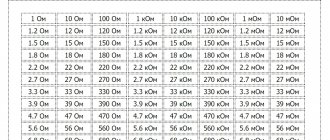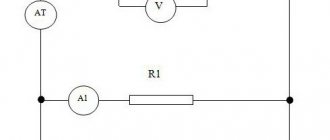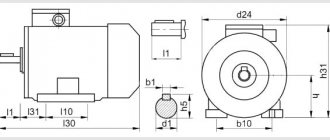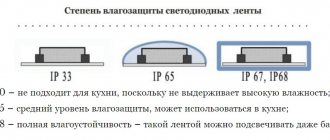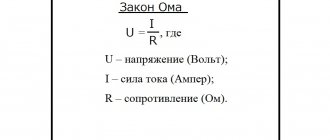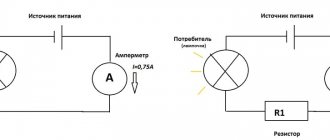Resistors are present in any electrical circuit. But in different circuits different amounts of current flow. The same elements cannot operate at 0.1 A and at 100 A. After all, when current passes, the resistance heats up. The higher the current, the more intense the heating. This means that the resistors must be for different current values. This is true. Their ability to operate at different currents is reflected by a parameter such as the resistor power. On larger parts it is indicated directly on the body. For small bodies there is another method of determination (see below).
Types of resistors
The cases of this type of product can have a cylindrical or rectangular shape. Based on the characteristics of behavior, the following types of these elements can be distinguished:
- Constant - have a constant (not changing) resistance. They are used if a circuit fragment requires maintaining a certain voltage or current value. To select such a device, you have to take measurements with a multimeter and calculate the required parameter values.
- Variable – with the ability to adjust resistance. Control can take the form of steps or be smooth. Can be used, for example, to regulate sound level.
- Adjustable - a variation of the previous type, which very rarely requires manual adjustment.
- Devices whose resistance is variable and depends on ambient temperature or lighting.
Important! Nonlinear components of almost all varieties are made of semiconductor materials.
What is it for?
A resistor is designed to provide resistance to the current flowing through the system. Used in various fields. The purpose of the device can be as follows:
- “Conversion” of current energy into voltage (or vice versa);
- Limiting the incoming force to the required level;
- Creating separators (for example, in measuring devices);
- Solving specialized problems (for example, reducing the impact of radio interference).
Important! The simplest way to use the device is to operate an LED. The element's own resistance is too low. Without a limiter - a resistor - the passing current will instantly damage the element.
Light-emitting diode
Resistor element parameters
Resistor resistance - formula for calculation
The key parameters of this group of parts include:
- component resistance;
- tolerance (degree of variability of the nominal resistance) – can take values up to 20%;
- TKS - change in resistance when heating or cooling air by 1 degree (it is advisable that the elements of one electrical circuit have an identical value of the indicator);
- power, showing how much thermal energy can be released into space while maintaining the correct functioning of the element.
Important! How much energy a component will dissipate is affected by its size. A trained eye is capable of visually determining the value based on the dimensions of the resistor. The correlation with magnitude is due to the fact that when current flows through an element with a large surface area, heat is released into space at a higher rate (if we are talking about air).
Miniature SMD components are marked with strips of different colors. The interpretation of the color code can be viewed online (for example, on the manufacturer’s website). Often it is given in the attached technical documentation.
Color coding of miniature parts
Theory
To ensure that the LEDs do not burn out, it is important to correctly calculate the limiting resistor.
Mathematical calculation
You can do the necessary calculations yourself; for low values, you do not need a calculator. Or using a special program that does the calculations for you. When calculating the resistance of a quenching resistor, you need to know Ohm's law. R = U-ULED /ILED U - mains voltage;
ULED is the value of the voltage that is optimal for the operation of the diode. I LED is the current for which the element is designed to operate. To prevent overheating of the resistor during operation, it is necessary to additionally calculate the optimal power for this voltage. P = (U-ULED)*ILED
In this circuit, a resistor is connected to the cathode of the luminous element.
Resistor calculation
To correctly select a component for a circuit, you will need to find the values of its key indicators. With different types of connections of several components, the parameters will take different values.
Serial connection
Resistor E24 resistance range
When using a series circuit, the resulting resistance value is equal to the sum of the individual values for each resistor. Using this rule, you can find out which component with which indicator should be purchased. For example, you need to get 220 Ohms in the circuit, there is a device for 130 Ohms. Therefore, you need to buy a second one for 220-130 = 90 Ohms. The current flowing in the circuit and the current on each resistor element in this case have the same value.
Parallel connection
Formula for total resistance:
R=R1*R2/(R1+R2).
From it you can find out the target resistance of the element that needs to be purchased. The electric current in the unbranched part of the network in this case is equal to the sum of the currents of the individual branches.
Important! Unlike the previous case, this scheme is recommended for use if the indicators for individual elements exceed the total required R.
Mixed compound
It includes combinations of structures of the two previously designated types. To calculate the indicators for individual resistors, the circuit will need to be simplified.
Decomposition of a mixed circuit into parts
Power
To select the right part, you need to know how to correctly determine the power of the resistor. This can be done based on the formulas:
P=U2/R=I2*R.
It must be taken into account that the use of a part with a parameter exceeding the recommended one is acceptable, but the opposite case is not.
Features of cheap LEDs
When choosing an LED on the market, you can find completely different prices. What is the difference between expensive diodes and cheap ones? LEDs at different prices differ not only in external features, but also in technical characteristics. For cheap LEDs, the parameters are very different from each other, while for expensive ones they decrease smoothly when the current or network voltage changes. In addition, cheap analogues may not last long and the light will be dimmer or harsh on the eyes. Read here what you need to pay attention to when buying an LED lamp and how to install it.
Types and designations of resistors
Basically, products with typical dissipation power values (0.05, 0.125, 0.25, 0.5, 1, 2 and 5 Watts) are produced for sale. Visual designations of products with different ratings on electrical circuits are regulated by GOST. Before assembly, you need to check that the parts used correspond to the ratings indicated on the diagram. Elements are also produced with other power indicators that differ from the standards. In practice, they are used infrequently, mainly for a specific task.
Specifications for the designed circuit, as a rule, contain instructions on what values of the main parameters the resistor should have. Sometimes even a specific model is indicated, as well as the permissible deviation from the fixed nominal value.
Designation of parts with different ratings
Thermistors
Rice. 6. Thermistor
Thermistors are resistors whose resistance changes significantly with temperature changes (Fig. 6).
The resistance of NTC thermistors gradually decreases with increasing temperature. NTC are ready-made temperature sensors with a measurement range of -55… +200°C.
PTC thermistors are characterized by an abrupt change in resistance at a certain temperature. They are used as overcurrent protection elements.
PTC hold current is the current at which the thermistor is guaranteed to be conducting.
PTC trip current is the current at which the thermistor is guaranteed to become non-conducting.
Examples
- PTC thermistors:
- 1812 - MF-MSMF series manufactured by Bourns for operating currents from 0.3...5.2 A;
- 1812 - 1812L series from Littelfuse for operating currents 0.1...3.5 A.
- B57236 series from EPCOS with a resistance range of 2.5...120 Ohm;
- 0603 - ERT-J1 series from Panasonic with a resistance range of 0.022...150 kOhm.
Part heating depending on resistance
When choosing a suitable resistor, you must pay attention to the temperature range at which correct operation of the part is possible. It is always specified by the manufacturer. In order for the resistor not to fail, timely release of heat into the atmosphere is necessary. The element must not overheat. The colder the air (within the acceptable range), the longer the component has a chance to last. Do not allow excess heat to accumulate near the resistor.
When the temperature indicator reaches its maximum within the range, the process of burning out the upper marked layer begins at the resistance. In this case, it is necessary to take measures to reduce the temperature, otherwise the product’s filling, which is responsible for resistance, will burn out and it will become completely unsuitable for further use.
If a part with the required dimension for a specific circuit is not found, you can use the option with a superior value if it suits the device being assembled. Resistors whose power data does not reach the required ones can be used in such a situation only by combining them in series. In general, knowledge of the effects of parallel and series connected resistor elements will be useful in a situation where there is no part with ideally suitable parameters at hand.
Device Specifications
The main characteristic of a resistor is the nominal resistance Rн, which is indicated on the diagram near the resistor and on its body. The units of resistance are ohms, kiloohms and megaohms. Resistors are manufactured with resistances ranging from fractions of an ohm to hundreds of megaohms. There are many technologies for producing resistors, they all have advantages and disadvantages. In principle, there is no technology that would allow an absolutely precise production of a resistor with a given resistance value.
The second important characteristic is resistance deviation. It is measured as a % of the nominal R
There is a standard range of resistance deviations: ±20, ±10, ±5, ±2, ±1% and further up to ±0.001%.
The next important characteristic is the power of the resistors. During operation, they heat up from the current passing through them
If the dissipated power exceeds the permissible value, the device will fail.
Resistors change their resistance when heated, so for devices operating in a wide temperature range, another characteristic is introduced - the temperature coefficient of resistance. It is measured in ppm/°C, that is, 10-6 Rн/°C (part per million of Rн per 1°C).
Resistor power
The power dissipation of a resistor by appearance is most clearly determined by Soviet cylindrical products; they differ noticeably in size. Their marking has the following standard:
- the first letters are the type of element (for example, MLT - varnished metal film);
- then a hyphen, the first digit after it is the power value;
- then the resistance was indicated (in the case of kOhm, the whole part was separated from the fractional letter K: 1 K6 - 1.6);
- percentage deviation - for example, 6%.
For imported products, the markings have the form of colored stripes, where each color represents a specific number. There are variations with 3, 4, 5 stripes.
Without knowing the power characteristics, it will not be possible to select a suitable element for installing an electrical circuit. Using a resistor that is irrelevant for this indicator will cause it to overheat and quickly become inoperative.
